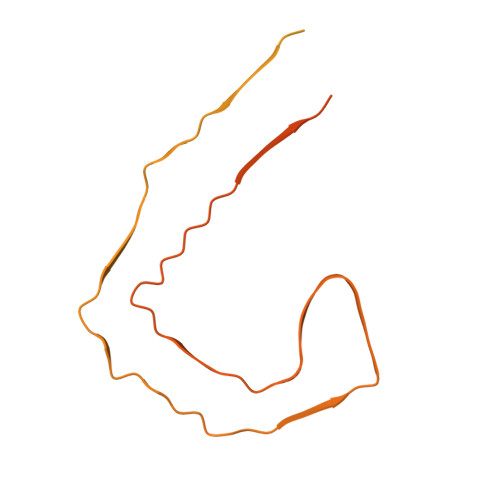Cryo-EM structures of tau filaments from Alzheimer's disease with PET ligand APN-1607.
Shi, Y., Murzin, A.G., Falcon, B., Epstein, A., Machin, J., Tempest, P., Newell, K.L., Vidal, R., Garringer, H.J., Sahara, N., Higuchi, M., Ghetti, B., Jang, M.K., Scheres, S.H.W., Goedert, M.(2021) Acta Neuropathol 141: 697-708
- PubMed: 33723967
- DOI: https://doi.org/10.1007/s00401-021-02294-3
- Primary Citation of Related Structures:
7NRQ, 7NRS, 7NRT, 7NRV, 7NRX - PubMed Abstract:
Tau and A¦Â assemblies of Alzheimer's disease (AD) can be visualized in living subjects using positron emission tomography (PET). Tau assemblies comprise paired helical and straight filaments (PHFs and SFs). APN-1607 (PM-PBB3) is a recently described PET ligand for AD and other tau proteinopathies. Since it is not known where in the tau folds PET ligands bind, we used electron cryo-microscopy (cryo-EM) to determine the binding sites of APN-1607 in the Alzheimer fold. We identified two major sites in the ¦Â-helix of PHFs and SFs and a third major site in the C-shaped cavity of SFs. In addition, we report that tau filaments from posterior cortical atrophy (PCA) and primary age-related tauopathy (PART) are identical to those from AD. In support, fluorescence labelling showed binding of APN-1607 to intraneuronal inclusions in AD, PART and PCA. Knowledge of the binding modes of APN-1607 to tau filaments may lead to the development of new ligands with increased specificity and binding activity. We show that cryo-EM can be used to identify the binding sites of small molecules in amyloid filaments.
Organizational Affiliation:
MRC Laboratory of Molecular Biology, Cambridge, UK.
















